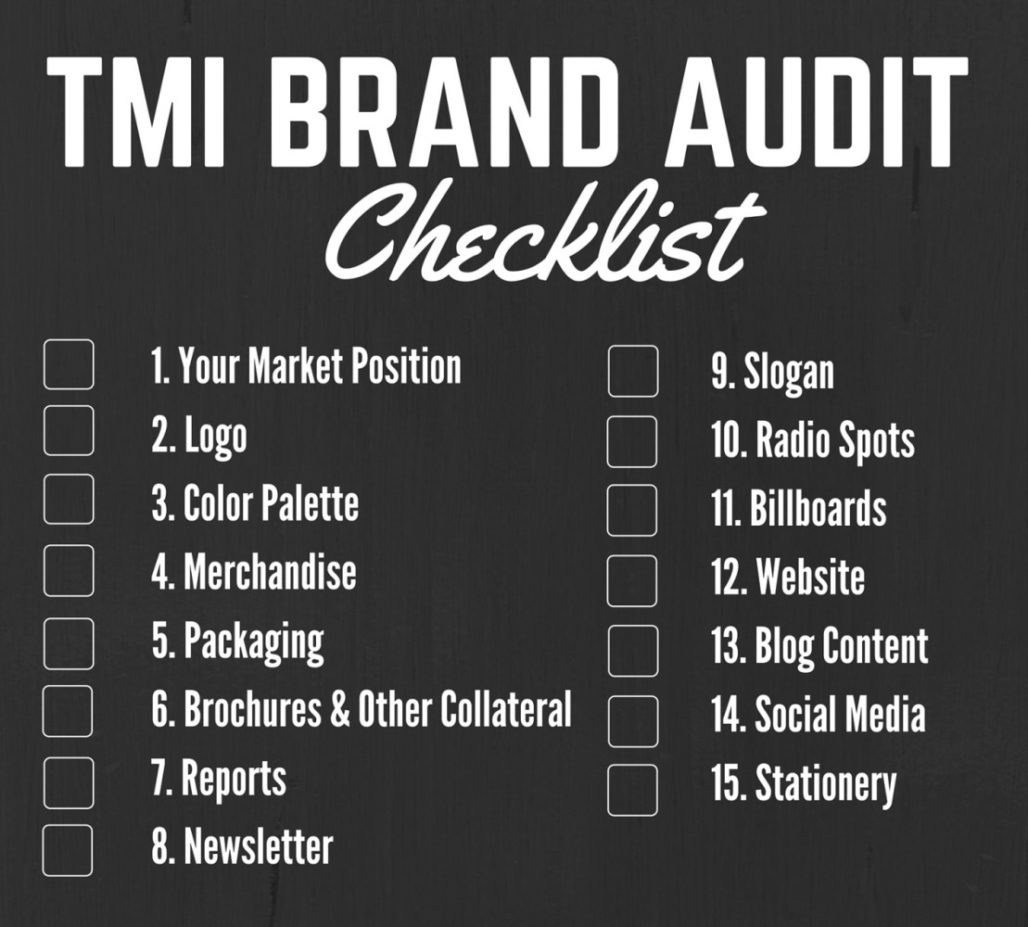A brand exists in every single touch point of a business. From obvious characteristics like a logo to less definitive features like tone; everything that matters in a small way adds up to matter in a big way in the grand scheme of branding. The purpose of a brand audit is to evaluate how the small pieces fit together to create an overall experience for a consumer audience. Knowing and shaping how your business is perceived is the key to running a successful marketing program. Unfortunately, evaluating that perception can be complicated and messy. The landscape of business isn’t a perfect world. It’s ever-evolving and change is inevitable. A brand audit helps you figure out your strengths and weaknesses at any given time. Keep in mind, there’s not a single brand that embodies perfection. Even the big shots like Coca-Cola or Procter and Gamble rely on audits to assess performance and adjust their strategy.
Audit seems to be a word that people cringe at the sound of. Already sweating? Don’t panic. TMI is coming at you with some Pinterest action and we’ve constructed a do-it-yourself brand auditing guide. We’re confident that with a little guidance, any business manager can learn how to successfully break down and evaluate a brand.

The Foundation: Your Market Position
First and foremost, you should be able to clearly identify the market you compete in and the competitive position of your brand within that defined market. The basics are a relatively high-level snapshot of where your brand exists, but they also create a foundation for further investigation. Before you move forward, take a long look at the place and purpose of your company.
How-To: Look at your own business in comparison to your competitors’. What is different? What is the same? The key to beginning your brand audit is simplification. Ask yourself the basic questions and work up from the bottom, step by step.
The First Step: Your Physical Identity
The visual representations of your brand are some of the first things that make an impact on consumers. Elements like logo, tagline, color palette, and overall design are crucial for first impressions, and even lasting impressions. When it comes to marketing, we hate to admit it, but you have to judge a book by its cover. It’s important that a brand develops a personality, but physical features are the first touch point. By nature, humans are more likely to take notice of a stimulus that is visually intriguing and memorable.
How-To: Take a look at everything that physically represents your business. Are your marketing materials consistent? Do they match the actual characteristics of your business? Creating a brand standards guide is one way to ensure consistency.
The Second Step: Voice & Style
The message you send to your audience and the manner in which you do so is just as important as physical features. Tone, writing style, and the specific voice you give to your business are characteristics that collectively create a brand personality. A personality describes how a brand speaks, thinks, acts, and reacts.
How-To: Look for consistency in the themes and ideas in your materials. Is everything clear? Do customers have to imply anything? Do you uphold your mission in your communications?
The Third Step: The Website
Your website is the main point in which your brand’s physical identity and voice begin to come together in a way which creates a rich brand experience. Technology gives us the ability to integrate many different brand elements into one interactive space.
How-To: At first glance, what does your website communicate? Is it visually pleasing? Does it incorporate your physical brand identity?
Almost There: Social Media
Most companies that use social media for business have some level of a strategy. (If not, call us. We need to have an intervention.) However, it doesn’t end once you hit publish. It’s important to follow up to make sure everything is on track.
How-To: The numbers attached to social media activity can get pretty heavy. For beginners, just simply take a look at what published content is received well by your following and what maybe didn’t perform too hot. Identify your best and worst channels and then lastly, ask yourself: Does this make sense for my business?
Victory: You’re Done
When you take a step back and look at the whole picture, the end goal is to determine whether or not your brand is distinctive and consistent. If your findings lead you to no, your brand needs a little tender loving care. The best way to make that determination is to combine your research with direct feedback. Consider asking real customers to complete a survey that asks general questions about their experience with your brand. Many times, an outside perspective is just what you need.
“A brand is not a product or a promise or a feeling. It’s the sum of all the experiences you have with a company.” – Amir Kassaei




